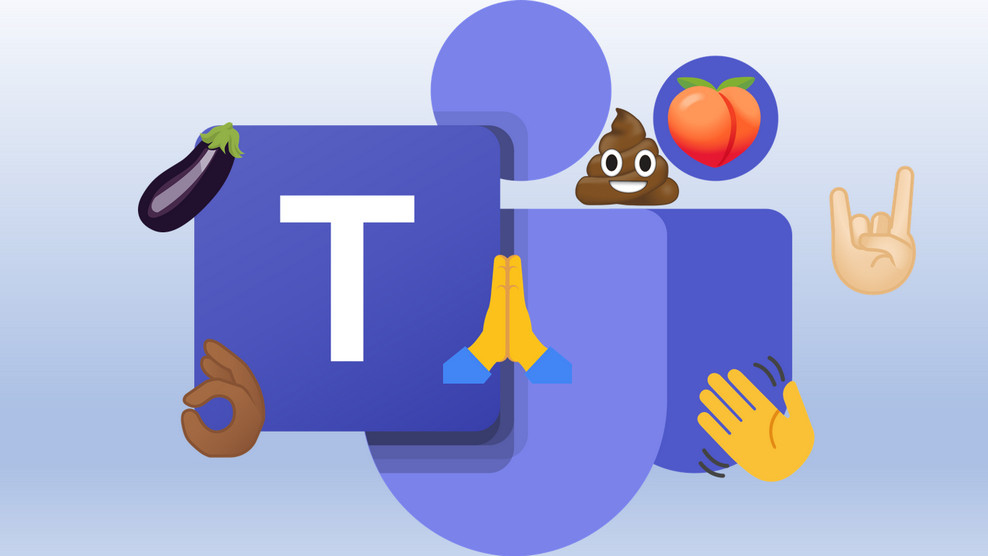According to the Microsoft365 Message Center (MC795750), everyone in an organization will be able to upload new emoji in Teams from July onwards.
Janneke Spiekerman shared this on LinkedIn (in Dutch) and to generally favourable responses. I commented that this would be interesting for multinational/multicultural organizations. Janneke asked me to explain.
Well, here it is. Thank you for the inspiration, Janneke!
Etiquette has been telling me for years that one should NOT use emoji in work situations. Fortunately this idea is changing as noted by Forbes and Harvard Business Review.
I personally think using emoji is fine between good colleagues and well-established teams, and you can use them all across Microsoft365, but I think you should be careful in formal communication or when you do not know your colleagues that well, because imagery can be a minefield, as I will explain below.
For any organization it can be excellent opportunity to have your own set of emoji, such as brand or project logo’s, avatars, products, and to create a common “visual language” in your organization.
My experience in complex organizations
But…I wonder how this will work in multinational/multicultural organizations. I have seen many struggles between various C-suite people, Communication managers on all levels, and employees who all had very different opinions with regards to expressions of non-strictly-work-related things.
For instance, the North-American organization I used to work for, celebrated Christmas 🎄 on our intranet, with snow ⛄ and wintery atmosphere. (And one time even with snow falling down on screen, which brought down the complete intranet due to the amount of bandwidth needed 😱😁)
But…our Australian and Middle-American employees did not want Christmas to be associated with snow alone, as in those countries Christmas is generally warm and sunny. 🌞
Our large community of Jewish employees in America wanted their special days 🕎 on the intranet, as well. And other large populations wanted their celebrations shared, such as Chinese New Year (Spring Festival) and Diwali (Festival of Lights) 🪔.
I am personally a big fan of sharing important holidays and celebrations on an intranet, as it means we can learn from other countries and cultures in a simple and convenient way.
Sadly, after an inventory it turned out we would have a celebratory item almost every week of the year, and someone had to create and manage that process. We decided to no longer celebrate any holidays on the intranet because it was too much effort to manage it all, and Comms had other priorities. 😢
Then there were words and images, used freely and without thinking in one part of the organization, that caused confusion or even anger in other parts. I wrote about that earlier.
It is already known that cultures have certain preferences for emoji, but also that some emoji can have different meanings in different cultures. I have collected a few examples:
How different cultures perceive emoji
The definitive guide to the most confusing emoji
How different cultures perceive emojis in workplace communication
Conclusion: imagery in large, multinational and multicultural organizations can be a tricky subject!
My suggestion
- Turn off the option (it is by default ON) and discuss first what you want to do, before your users have found the option and have uploaded all 5000 emoji you can add 😉
- Turn it on when you have a plan. Or keep it turned off.
Questions for your plan
For Communications and Microsoft365 admins in large organizations, the following questions may be relevant:
- What can be the benefits of having new emoji? Is this your opportunity to finally introduce that set of brand or corporate emoji, or do you think the Microsoft standard emoji are more than sufficient? Does everyone use Teams and will you get sufficient usage for your effort?
- Will you leave uploading to all employees (which may be OK for a small organization) or to some dedicated employees only? If the latter, who?
- Has your designer been instructed to keep “corporate emoji” formal and respectful to all employees and business partners? Also, will they include different skin tones, hair colours and hair styles when showing people?
- Do all emoji look OK on all devices and browsers used within the organization?
- Have you added alt-text to every image, so employees with reduced sight also know what an emoji means?
- How will you introduce the usage to your employees? Some people never use emoji, so they may appreciate some guidance.
- How will you communicate that these emoji are only available in Microsoft Teams, not in Windows or email or any other app (at least, that is what I understand)? This might lead to a lot of questions.
- How will you install a transparant “corporate” emoji process that includes a diverse/representative group of people to make sure that your emoji will be suitable for all.
- What will you do when an emoji that is perfectly suitable for the team that uploaded it, leads to objections for others? (Uploaded emoji become available for everyone).
- How will employees be able to give suggestions for new emoji as well as their opinion (including a reporting option for ones that they do not feel comfortable with)? How will you keep that feedback separate from feedback on the standard Microsoft emoji? 😱
- What will be your deletion process? Can the usage of custom emoji be measured?
- Is there enough bandwidth in the organization to manage this process on an ongoing basis? This, like so many other projects, is not a one-time thing!
Hmmm…I see that I have included some questions that I may want to address when I have the option to upload.
Conclusion
This is a great opportunity to create your own organization’s non-verbal language in Microsoft Teams. However, it can be a challenging process, especially for complex organizations. I hope I am overthinking it, but better safe than sorry!
My illustration contains NSFW and culturally confusing emoji, by design.

